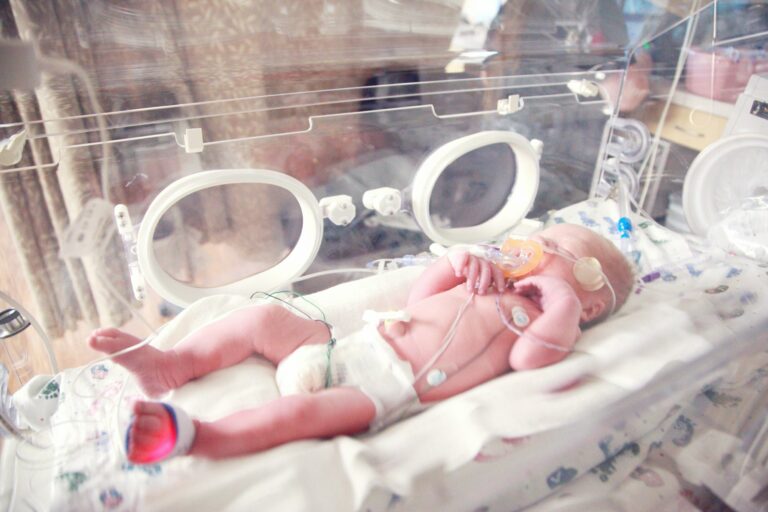For many parents, the moments before doing a pregnancy test feel suspended in time—uncertainty intertwined with hope, a dash of apprehension, and a flurry of questions. Should you trust the faint line? Is it too early, or already too late? What if the result is unclear, and your mind sways between doubt and anticipation? The experience of using a pregnancy test is not just a scientific ritual; it’s the start of a possible new journey. Today, detailed technology exists to provide guidance, yet each family’s path is unique. You may be wondering about timing, accuracy, different types of test kits, or even the right step after a positive or ambiguous result. Let’s unfold the science, best practices, and emotional realities around the pregnancy test, delivering both clarity and reassurance.
Pregnancy Test Fundamentals: Timing, Hormone Science, and Detection
Right at the core of every pregnancy test is the detection of human chorionic gonadotropin (hCG), a hormone which starts to appear after a fertilised egg nestles into the uterine lining—this usually happens about 6 to 10 days post-conception. Imagine hCG as the early messenger, quietly multiplying in the body, its levels doubling often every two or three days during the initial stretch of pregnancy.
Curious about when to grab that test? Urine pregnancy tests tend to give accurate results around the first day of a missed period, often about 14 days after ovulation. Extremely sensitive brands sometimes pick up hCG a handful of days earlier, yet too early a test can quietly deliver a false negative, not for lack of pregnancy but simply because hCG is not yet abundant enough. On the other hand, blood pregnancy test performed in a lab can detect minuscule hCG levels (as low as 1–2 mIU/mL), making them valuable even before a missed period.
Why first morning urine? Simple—overnight, your body concentrates hCG in your urine. Testing before hydrating or after a long gap gives the test more hormone to work with. Here’s a rule: always follow the kit’s instructions meticulously, use tests within their expiration date, and read results at the precise recommended time.
The Evolution and Mechanics Behind Modern Pregnancy Tests
Once upon a time, identifying pregnancy leaned on far more creative (and less private) traditions — Egyptian seed germination rituals or even the so-called “frog test” of last century. Today, convenience reigns: compact, one-step test kits, digital readers, and even app-connected solutions.
All modern pregnancy test kits—from strip to digital—rely on lateral flow immunoassays. These tiny devices invite a drop or stream of urine to move across a membrane with special antibodies, designed to react with hCG and display a visible signal: line, cross, or even a digital readout. Some contemporary devices go a step further, offering semi-quantitative results to suggest how far along a pregnancy might be, or eco-friendly disposables for minimal waste.
Urine Pregnancy Tests, Blood Pregnancy Tests: What’s the Difference?
Urine pregnancy tests are the most accessible, available at pharmacies, supermarkets, even online platforms. They come in diverse forms:
Test strips: Inexpensive but require careful handling—a cup and precise interpretation.
Midstream sticks: User-friendly, ideal for in-the-moment testing.
Digital readers: Wave goodbye to line confusion; a clear “pregnant” or “not pregnant” appears.
Blood tests, strictly done in medical settings, shine for those who need ultra-early confirmation or quantitative tracking, such as after assisted reproduction technology (ART) or if urine tests leave any doubt.
Key fact: No pregnancy test is designed to detect pregnancy within hours of conception. Implantation must occur, hCG levels rise enough—and this simply takes time.
Best Practices: When and How to Use a Pregnancy Test
Timing is everything. For most, the safest bet is to test on the day of a missed period. If cycles are irregular or uncertain, a wait of at least 21 days post-possible conception is a sensible approach. Use these practical tips to optimise accuracy:
- Use your first morning urine.
- Avoid excessive water intake right before the test—it can dilute hCG.
- Stick to these steps: open the kit, collect or apply urine as directed, start the timer, and read strictly within the designated time window (commonly 3-5 minutes).
- If the kit is expired or appears damaged from improper storage, best not to trust its results.
Testing too early, reading outside the proper time window, or guessing at faint evaporation lines—these are frequent slip-ups that can cloud clarity.
Reading the Result: What to Expect, What to Do Next
Pregnancy test results live in one of three zones:
- Positive: A definite “pregnant”, a clear cross, or strong lines, is usually accurate. Of course, emotions can be intense—elation, surprise, anxiety. It’s completely valid to feel a medley of all three. At this stage, booking an appointment with a healthcare provider is the next logical step—not only to confirm but to start early prenatal care.
- Negative: Not pregnant, or perhaps just too early? If menstruation is still missing after a few days, don’t hesitate to repeat the pregnancy test with first morning urine.
- Unclear or invalid: No control line, or a shadowy faint result? Low hCG could be to blame, or a misstep in the testing process. Wait a few days, try a fresh test, or opt for a blood test for confirmation.
Occasionally, an invalid test hints that something basic went wrong—expired kit, improper storage, or user error—simply repeat with a new kit.
Maximising Confidence: Insights for Reliable Testing
- Test a few days after your missed period for least ambiguity.
- Store your pregnancy test in a cool, dry spot, well away from sunlight and humidity.
- Certain fertility drugs containing hCG can give a falsely positive result; ongoing or recent medical treatments can influence things.
- Double-check the product’s expiry and physical condition before every use.
- Prefer well-established brands with recognisable certifications—think FDA or CE marks—for consistent quality.
Understanding Accuracy, False Positives, and False Negatives
When used as directed and at the right time, home urine pregnancy tests report astonishing accuracy—about 99%. Laboratory blood tests can detect even the faintest hCG presence, allowing the earliest possible confirmation.
But what about mistakes? False positives, though rare, can occur in cases of early miscarriage (chemical pregnancy), specific fertility medications, or unusual medical conditions. More commonly, false negatives result from testing prematurely, diluting the urine, or missing a vital instruction step (like reading the test after too long).
Unsure or surprised by a result? The best recourse remains repeating the test or consulting a medical professional.
Physical Signs, Emotional Currents: How Early Symptoms and Feelings Interact
A missed period. Sensitive breasts. Fatigue that settles unexpectedly. The urge to urinate more often. Nausea, mild or persistent. These symptoms, common in early pregnancy, are certainly familiar to many parents—but they also overlap with premenstrual changes. Only a pregnancy test can answer with clarity.
Emotionally, this period is a whirlwind in itself—anticipation, delight, concern, all vying for attention. Taking a test is not simply a technical step: it holds an emotional weight, unique for each family.
Positive Test? Confirming Pregnancy and Steps Forward
So, you’ve seen the positive result. Now, reaching out to your healthcare provider is essential—not only for confirmation (with a quantitative blood hCG test or, from about week 5 or 6 of pregnancy, an ultrasound) but to kickstart prenatal health measures. This means folic acid, healthy lifestyle adjustments, routine check-ups, and safety advice tailored to your journey. Complicated scenarios—like irregular cycles or IVF pregnancies—may require a more individualised plan.
Should you notice severe pain, heavy or unusual bleeding, don’t delay in seeking medical care.
Choosing the Right Pregnancy Test: Making an Informed Decision
- High-sensitivity tests (lower mIU/mL thresholds) win for early detection.
- Trusted brands like First Response, Clearblue, Easy@Home, and ClinicalGuard have widespread positive feedback.
- Digital versions are easy to interpret, minimising subjective doubts around faint lines.
- Kits in-date and correctly stored (and not damaged or tampered with) provide more dependable results.
- Official certifications—FDA, CE—are markers of manufacturing standards you may wish to prioritise.
Choosing a pregnancy test becomes an informed, confident step toward clarity—not just a matter of chance.
True or False? Navigating Myths and Reliable Practices
- Pregnancy test kits can’t detect a pregnancy immediately after conception; the body simply hasn’t produced hCG yet.
- Drinking large quantities of water before testing can thin out urine and lower accuracy.
- Routine contraceptives, including oral birth control, do not change pregnancy test results.
- A faint line often still means “pregnant”—but retesting or medical clarity removes doubt.
- Only use undamaged, in-date kits—proper storage at moderate temperature is key.
- Don’t let lines left too long on a test device mislead you—a result should be read only within the manufacturer’s window.
Key Takeaways
- Pregnancy test kits help detect the hCG hormone—urine tests offer convenience, blood tests provide earlier, precise confirmation.
- Best practice: test on or after the expected start of your period, use first morning urine, and follow all directions closely.
- If results are doubtful, repeating the test after a few days or consulting your doctor assures more certainty.
- Always confirm a positive test with a healthcare provider and begin recommended prenatal care without delay.
- Resources and experts are available, and if you seek tailored tips or child health questionnaires, you can download the application Heloa for support at every step.
Questions Parents Ask
Can medications or health conditions influence the accuracy of a pregnancy test?
Certain medicines, especially those linked to fertility treatments containing hCG, can affect the outcome of a pregnancy test, sometimes causing a positive result in the absence of a pregnancy. A few rare health conditions may also impact hormone levels, making things less clear. If you are currently under specific treatment or have medical questions, a consultation with your healthcare provider helps clarify any doubt and ensures you have trustworthy answers.
Where can I buy a pregnancy test and is there a wide price range?
You will find pregnancy test kits at pharmacies, supermarkets, and across online shopping platforms. Basic strip tests are usually budget-friendly. Digital or app-linked devices may be on the pricier side. Regardless of price, trusted brands with proper certification always maintain the essentials of safety and reliability. When in doubt, your pharmacist can point you to the most suitable choice based on your requirement.
What to do if the result of my pregnancy test is unclear after several tries?
If repeated pregnancy tests from different brands, even on separate days, keep giving indeterminate answers, it’s understandable to feel on edge. The advisable path is to connect with your doctor. Further steps may include a blood test or additional investigation. Uncertainty is common, and support from medical professionals can help settle any lingering doubts.
Further reading:









